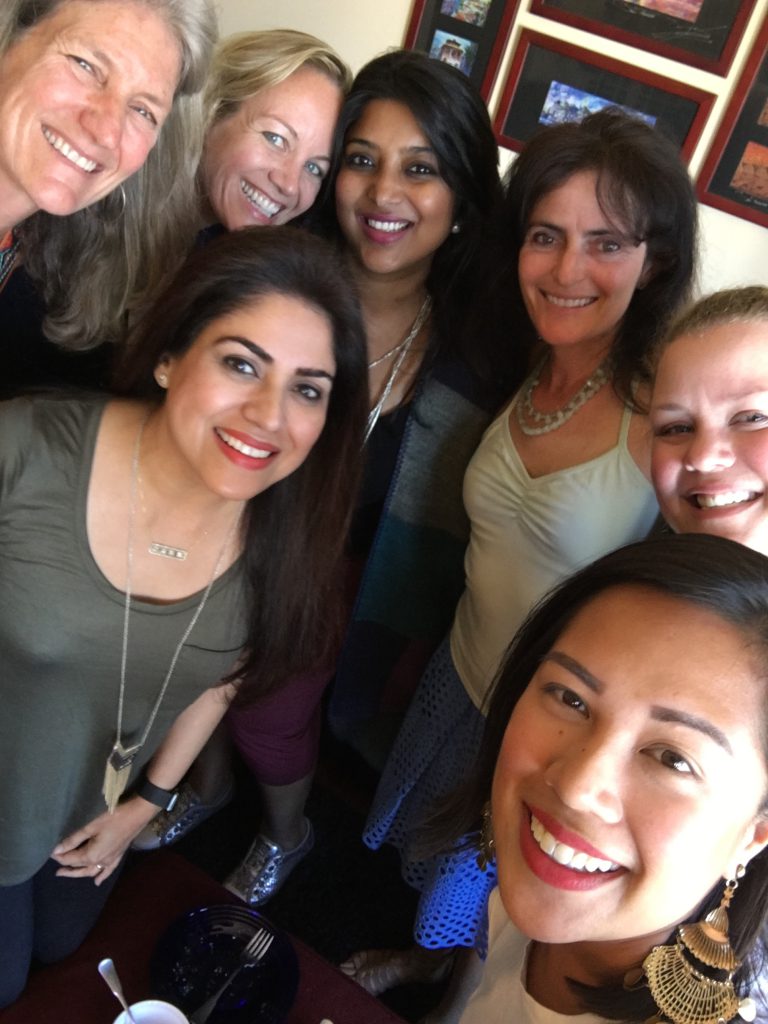I love few things as much as gathering women together. There's often more laughter in groups and more diverse sharing and feedback. Plus, it also saves time being able to connect with a handful of friends at once, and it's more of a sure thing even if 1-2 people end up not being able to come. But there are so many kinds of groups to start! Your first question to answer is: What do I want the focus of the group?
- Our Lives: This is one of my favorites-- basically we know that we are getting together in order to stay in touch, support each other, and invest in our relationships. We are the subject and ideally each person has time to share with everyone else what matters most in her life right now. These groups should be started when you primarily want to bond by sharing your lives with each other.
- A Theme/Subject: This category is one of the most popular types of groups because it includes such things as book clubs, support groups, entrepreneurs circles, mom's groups, Bible study groups, and political gatherings. These groups should be started when you primarily want mental stimulation, resonance in shared interests, and advice or support in a specific area.
- An Activity: This category of group is primarily for gatherings where an activity is the focus whether it be a cooking club, a dining out group, a hiking group, or a group dedicated to training for an event. These groups should be started when you primarily want support/accountability in doing an activity, to experience new things, meet people with similar activity interests, desire more fun and socializing in your life, or to expand our horizons.
Of course there can be some cross-over, but it's important to be clear what desire is prompting your group. If the focus is on hiking then one is less likely to leave feeling disappointed if no one asked her about her life, or if the focus is a mom's support group then we can put less attention to coming up with new activities and changing locations and devote more planning to conversations that matter to mothers. Knowing the priority serves as a filter for planning!

Another question that must be answered: Who is this group for?
- Is there an ideal size? A minimum? A cap? If it's conversation-based it may help to be small enough to give time to everyone to share. If it's meal-based, do you want everyone to fit around a table? If it's networking based then maybe the more the merrier?
- Is there something that everyone has to have in common in order to attend? Do they need to live in the neighborhood, have kids, or attend a certain church?
- Is this an open or closed group? Can attendees invite others to come with them? Do you want to keep meeting people or go deeper with the same people?
- What level of commitment is needed? Can attendees simply come when they want or is the intention that they come regularly?
I'll make a note to write more specific blog posts addressing some of the different types of groups since they will each have different needs. But here are some of my overall tips:
- If you already have a few specific people in mind that you want participating-- then invite them to give input to such questions as 1) What type of group interests you the most? 2) Do you have others you'd like to invite? 3) Knowing we'll feel closer the more often we meet-- how frequently would you be willing to commit?
- Unless the focus is specifically to "try new restaurants in the city" or "explore new hiking trails" then keep the location as consistent and easy as possible. Every time you "switch" places it takes more brainstorming, planning, and communicating; plus attendees will be more likely to cancel if it feels like it will take a lot of energy.
- Similarly, come up with a "routine" and repeat it as often as possible. People want to know what is expected of them and what to expect. My girls group "routine" is to chit-chat and catch-up while everyone arrives and before we put dinner on the table, but once we all have food on our plates then we switch gears to "going around the circle and each person sharing their highlight/lowlight." Maybe your book club talks about the book and then ends with mingling? Or is it the other way around? Aim for consistency.
- Keep the dates set even if someone can't attend. Groups turn into a logistical mess when we start trying to change dates to accommodate different people. In general, it's best when the group can set their dates ahead of time (either the same day/time every week/month OR set their dates far enough out as a group so that everyone can plan around them) and then stick to them. Every time you change for one, you risk messing it up for another, plus add to the communication weariness.
- Make sure everyone is given time to "be seen." I'm a big fan of "going around the circle" so that each person has a chance to share--whether it's as small as an introduction before an activity or as big as giving each person 15 minutes to share on the topic of the evening.
What other tips do you have that you think would be helpful to others who are planning group gatherings?
Or, what other questions about group events do you have that I might be able to answer in a future post?

